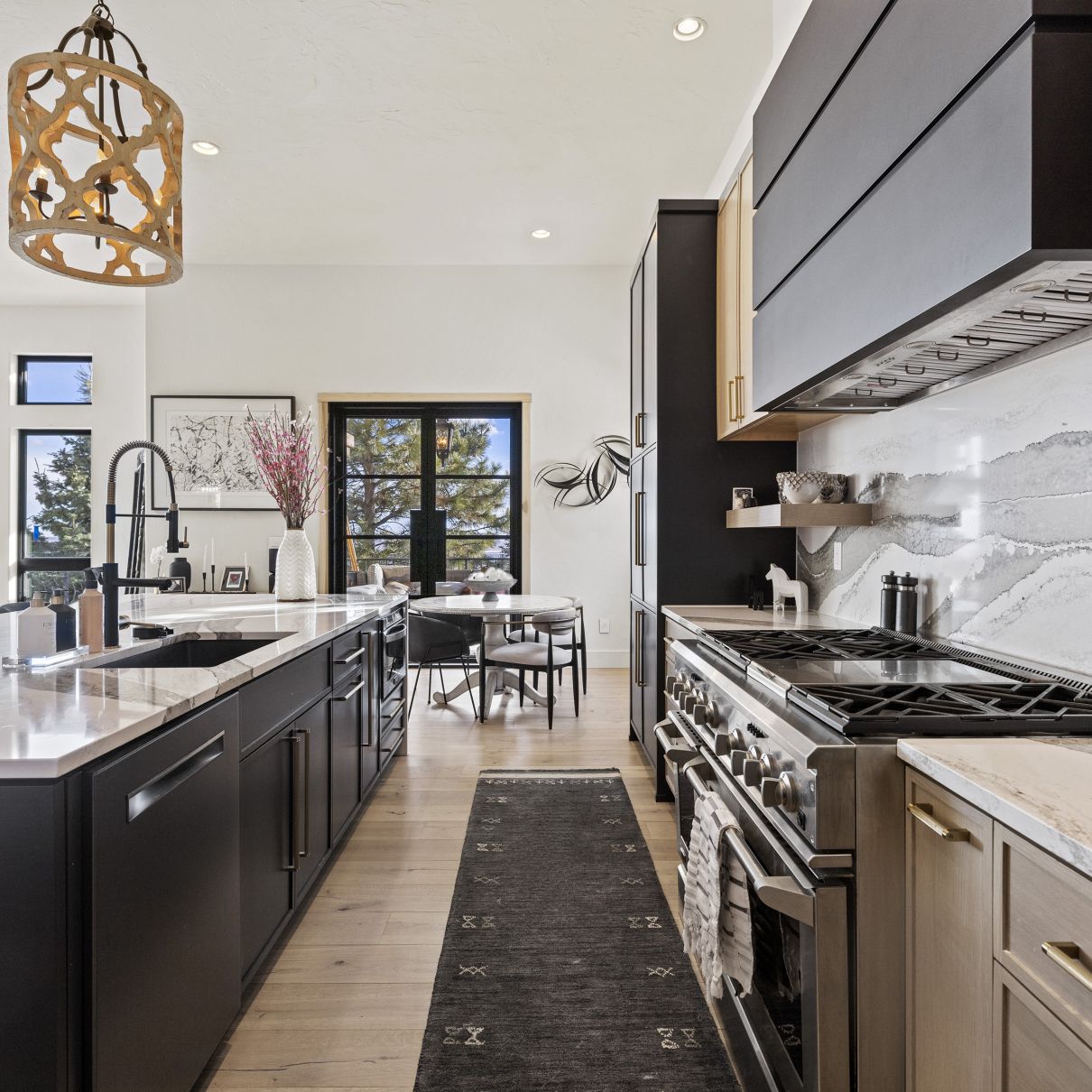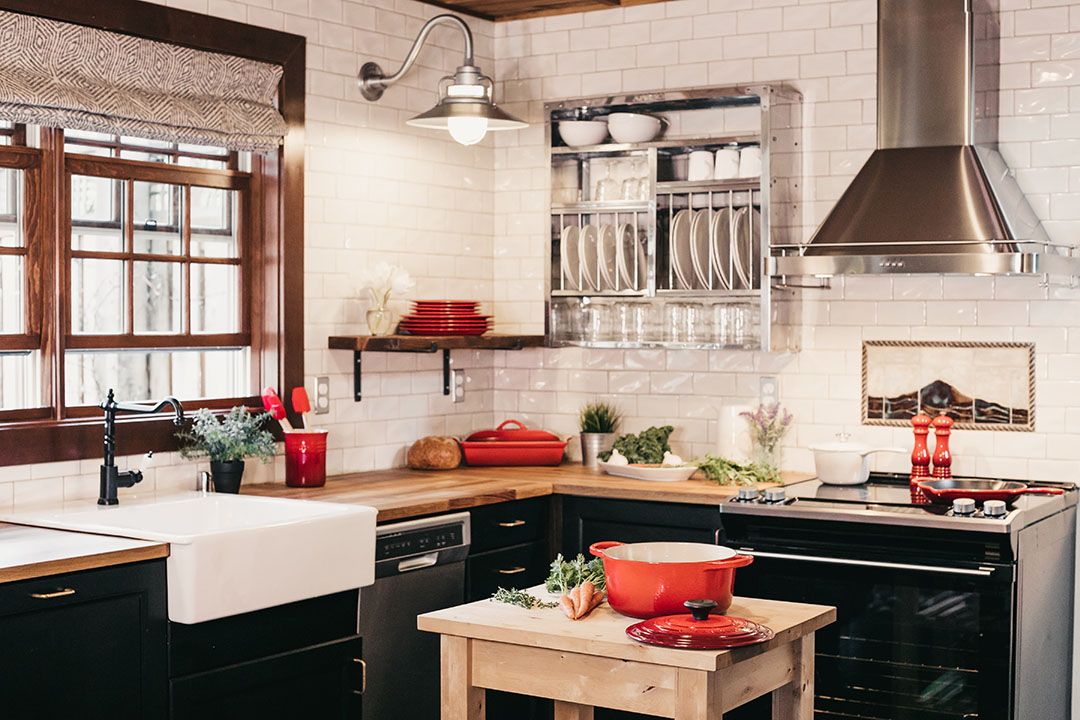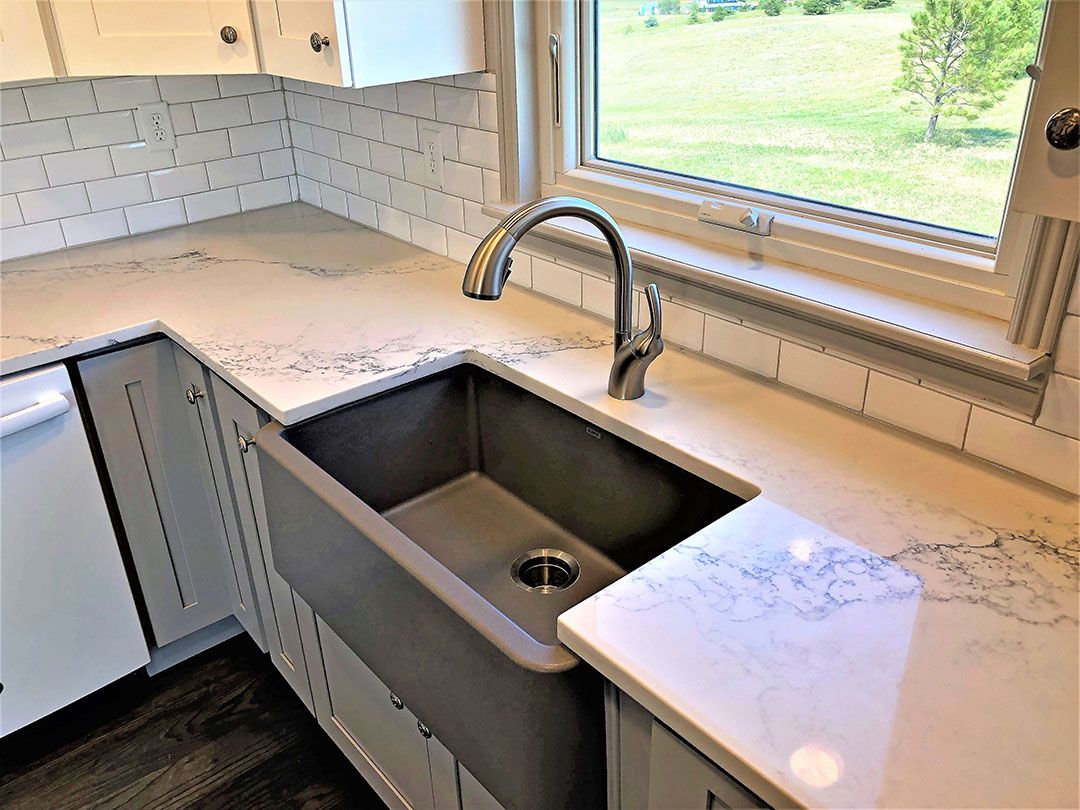
Choosing the Perfect Countertop: A Guide to Materials and Styles for Your Colorado Springs Home

Custom homes throughout Colorado Springs boast a variety of countertop fits and finishes. Stone, quartz composites, renewable acrylic, concrete, butcherblock–all in a countless colors, patterns, and textures. In this article, we’ll review some of the most common countertops our customers like best and explain the differences between them.
With so many countertop choices available in Colorado Springs, homeowners can face analysis paralysis when choosing the best material for their kitchen remodel. The good news is that there’s virtually no right or wrong answer; your choice should best suit you and how you intend on using your countertops. There are a few things to keep in mind: aesthetics, durability, and affordability. You should like the way your countertops look, if you’re an aspiring gourmet chef you may demand a little more out of them, and all countertops should fit within your budget.
Natural Stone
Granite
We’ll cut to the chase, granite is most common countertop that we install–and for good reason. Granite countertops come in a wide array of colors, and usually any homeowner can find a style of this stone that suits their renovation. The stone is custom cut in long, thick slabs and very few–if any–seams are needed. Granite is extremely durable, extremely heat resistant, and resists stains well when sealed properly. Most granites are polished and have a glossy sheen, but you can get creative with matte finishes and even leathered textures–perfect for popular Colorado lodge and rustic looks. The only measurable con of granite countertops is that they can be expensive. However, if you haven’t priced the market in a few years, you may be surprised–granite has become much more affordable than in the past.

Marble
There are two major reasons why someone out would choose marble. The first is style. If you’re building a Greek or Roman palace, there’s no substitute. Marble is a beautiful stone traditionally reserved for elegant and high-end custom kitchens. However, marble comes in much fewer colors and styles compared to granite, and it isn’t as durable. Marble is soft and porous, making it susceptible to knife scars and staining. However, the second reason someone may choose marble is for its function. Marble is the best surface for bakers and master pasta makers to work from. There’s a reason you see marble throughout Italian kitchens.
Concrete
We really love what our customers have done with concrete countertops. This style has grown in popularity in recent years due to its installation method having been perfected. We’ll admit, concrete countertops in the ‘80s and ‘90s were a bit… awful. Erase that from your memory. Concrete is now truly the most customizable countertop on the market. They can be poured into any shape to seamlessly fit any unique kitchen design you may have, and can also come pre-cast made in a workshop and delivered just like granite. While concrete still looks like stone, it can come in just about any color by adding pigments during its mixing. Concrete countertops are also bold, pre-cast usually coming in at 1.5 inches thick or thicker if poured on site. The concrete is then honed and sealed to prevent staining. It is very durable and it is very heat resistant. The greatest concern with concrete countertops is cracking, however new installation methods utilize wire mesh along with fiberglass or stainless steel fibers to prevent this. Concrete can also be expensive.
Engineered Solid Surfaces
Acrylic
More affordable countertop options are acrylic and quartz composites. These are commonly known as Corian and can be found in new production homes throughout Colorado Springs as an upgrade over typical plastic laminate, but are less expensive than natural stone and concrete. Solid surfaces are offer wide variety of colors and patterns, and they are completely renewable and repairable. Scratches and burns can be sanded out and deep gouges can be filled–however, matching unique / uncommon colors or patterns can be challenging. All seams are fused together and are virtually undetectable, making them great for large sections. Solid sinks in matching colors are also available, which many people like. Functionally, these countertops make a lot of sense, however they are not heat resistant and will show scratches over natural stone options.

Quartz
Quartz, or engineered stone, offers a lot of the same benefits and seamless installation advantages as acrylic above, but are meant to mimics granite and natural stone. Aesthetically, these countertops offer depth and clarity not found in other materials. The manufacturer mixes quartz dust with acrylic / epoxy to create a composite surface. This faux-stone is much more durable than the pure acrylic countertops listed above, they are also virtually maintenance free, but are also more expensive.
Wood Butcherblock
A classic look to perfect a particular style, wood butcherblock countertops are custom built to your design. Traditionally made from maple because the species of wood is extremely dense, walnut, cherry, and oak can also be used. Cut to size and then glued end-grain up, butcherblock countertops can be anywhere from 4 inches to 12 inches thick. Wood is a fantastic surface to work from, and next to marble, is a top choice for chefs and bakers. However, these countertops do require more maintenance than most. Knife marks, scuffs, and burn spots will show, but with a little work these countertops can easily be renewed. Depending upon supply, the raw material can be reasonably priced, however wood butcherblocks require a great deal of labor to create. We find that many customers like natural stone countertops along the parameter of their kitchen, and then a nice oversized wooden butcherblock island to work from. This strikes a functional balance for the serious chef while minimizing overall maintenance.
Ceramic Tile
We do not recommend tile for kitchen countertops. However, tile can blend with the countertops listed above to make excellent backsplashes or serve as secondary surfaces such as eat-at counters, peninsulas, wet bars, or in the pantry. Grout lines in tile make it a very difficult surface to work from. They trap food, are difficult to clean, and are uneven for rolling out dough or placing large baking dishes, pots, and pans. Tile can serve many purposes throughout your home, but the frustration it causes when used as kitchen countertops should be avoided.

Which Is The Right Kitchen Countertop For You?
There are plenty of products and materials to choose from for new kitchen countertops, and fortunately here in Colorado Springs, we can source any of them. Styles range from modern to rustic, contemporary to classic–with all colors and textures in between. There is no universal best choice for countertops, it purely comes down what you like and how you’ll use it. That’s where we come in–we help you make choices and design features that will best suit your lifestyle and taste. Let’s get this kitchen remodel started! Contact us today and one of our project managers will listen to your needs.


